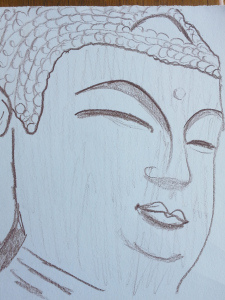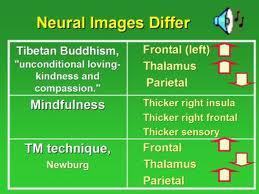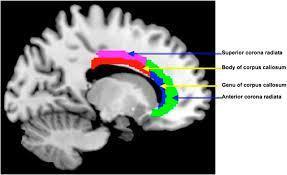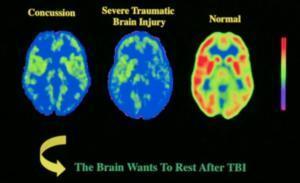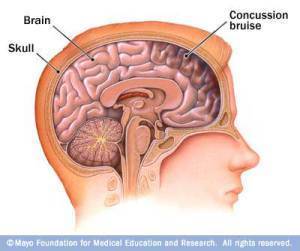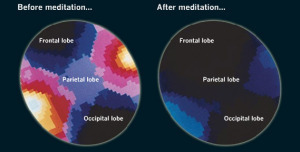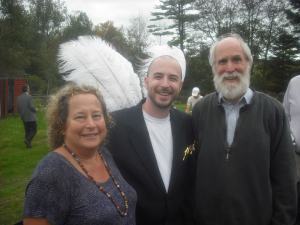Sally Ember's Blog, page 117
May 2, 2014
Support an Author Month: Love a Blogger! ~ #saam14
Yes, Please: LOVE your favorite bloggers. Here are the ways: share their posts. Follow/subscribe to their blogs. Visit and leave interesting comments. Engage with others’ comments. Buy their books/products and/or recommend them to others. Tweet their blog URLs and latest posts with your comment. Re-post their content on re-posting sites (Reddit, StumbleUpon, etc.). Reblog their posts with your comments. Invite them to guest-post on your site or offer to guest-blog on theirs (if they invite such and you are compatible/capable/available). Write reviews, rank, rate, vote up their books on Goodreads, Listopia, Amazon’s Listmania. Put their books on your “Wish Lists” or “To Buy” lists on book selling sites. Buy their books in indie bookstores. Tell your indie bookstores how glad you are they’re still viable and carrying YOUR favorite authors’ books. Come up with your own ways to SUPPORT AUTHORS this month!
 Originally posted on "CommuniCATE" Resources for Writers:
Originally posted on "CommuniCATE" Resources for Writers:

This month is Support an Author Month here on CommuniCATE. The aim is to spread the love… It’s a time to put away competition and give each other a hand onwards and upwards! We are stronger as a unified community.
Most posts this month will be geared towards that goal, with call to action posts every Friday.
This week, your call to action is to visit a favourite blog; locate a post that inspired you and leave a comment saying, “This is my favourite post or blog. Thank you!” Be sure to Tweet, Facebook or share it on G+ so the author knows you’ve spread the word.
#bestpostever or #bestblogever
You are also welcome to leave a link in the comments here and recommend a blog, if not a specific post.
Cheers everyone!
Filed under: Writing







Un-Wiring Your Brain
Would someone please read this and see how it relates to my blog post today about the effects of concussion on meditators?
 Originally posted on 365 Days of Buddha:
Originally posted on 365 Days of Buddha:
Imaginary Pictures Buddha.
If you’re as fascinated as I am by the science-behind-mindfulness, check out this article from Scientific American called Neuroscientists and the Dalai Lama Swap Insights on Meditation.
Filed under: Writing







THE PASSING OF A FRIEND – THE LAST STORY…
Important, always timely info and advice. Please share! We ALL die.
 Originally posted on BIRTH AND DEATH AND IN BETWEEN:
Originally posted on BIRTH AND DEATH AND IN BETWEEN:
Ten days… From his diagnosis to his death… Ten days.
It gives one pause.
 Many people have asked. Did he see this coming? Was he prescient? If not, then why did he spend months last fall, while he was presumably healthy, preparing to die – educating himself about death and dying like it was another doctoral thesis? He examined the subject thoroughly from every possible perspective. He contemplated it from a deeply spiritual view in his Buddhist tradition. He became knowledgeable in a practical sense about getting all his affairs in order. He even left signs around his house. “If you find me dead, call these people. Everything is in my briefcase.” He learned about end of life care and hospice services. He went on a road trip, healing old relationships and taking care of unfinished business. “We never know when impermanence will strike,” he used to stay. “You breathe out…
Many people have asked. Did he see this coming? Was he prescient? If not, then why did he spend months last fall, while he was presumably healthy, preparing to die – educating himself about death and dying like it was another doctoral thesis? He examined the subject thoroughly from every possible perspective. He contemplated it from a deeply spiritual view in his Buddhist tradition. He became knowledgeable in a practical sense about getting all his affairs in order. He even left signs around his house. “If you find me dead, call these people. Everything is in my briefcase.” He learned about end of life care and hospice services. He went on a road trip, healing old relationships and taking care of unfinished business. “We never know when impermanence will strike,” he used to stay. “You breathe out…
View original 561 more words
Filed under: Writing







15 Points about the #Effects of #Concussions on #Meditators’ #Brains
What are the #effects of #concussions on #meditators’ #brains? Many doctors and patients now agree that #meditation helps relieve pain and stress. Therefore, meditation is recommended post-concussion for many with injured brains.
However, I haven’t found anything for my problem: my concussion makes it impossible or difficult/painful for me to meditate. What happens to those who are already long-time meditators (such as I am; 42 years), post-concussion?
It’s fewer than four weeks since my injuries. I still have a lot of trouble and need to take much more time than usual to think clearly enough and to write well enough (neither up to former standards) to put this post together. Forgive its clumsiness, please.
Let me explain, first: the type of meditation I currently do is advanced. This means that the meditation techniques take years to learn. Practice is not just for twenty minutes a day or relegated to a physical posture or on a meditation cushion. This type of meditation involves components of many other types as well as more aspects which are unique to it. It is a Tibetan Buddhist practice called dzogchen (“Great Perfection”) that is supposed to occur all day and into the night (excellent practitioners do it 24/7). It takes years to cultivate this ongoing meditation as a habit.
Therefore, whatever brain parts most meditators are activating, meditators doing dzogchen meditation are utilizing those parts plus a few more, and all the time, once we’re “getting it.”
Post-concussion, the worst after-effect, for me, was being unable to meditate. This is comparable to being unable to eat sufficient food or breathe enough air. We can survive, but we are not well, you see?
What about having had a concussion is preventing me from meditating? Why do certain parts of my brain hurt when I try to meditate?
Finding nothing to answer my questions all in one place, I did some of my own research to help me understand and share what has been happening to me since my injury on April 6.
Here is what I found to be true, complete with PET scans, MRIs of brains and other visuals.
1. Scientists are learning more annually about the ways that meditators’ brains are different than non-meditators:
image from http://www.exploratorium.edu
Conclusions from above: meditation activates parts of our brain that ordinary brain activities do not.
2. Insight or Vipassana (Vipashana) meditators’ brains have been studied most. Here are some pictures to show how much that type of meditation changes the brains of Insight meditators:
image from http://www.nmr.mgh.harvard.edu
3. How else does meditation change one’s brain?
image from expanded–consciousness.blogspot.com
Meditators’ brains have thicker cortical areas and other parts are also strengthened unusually by meditation. Our brain waves are different even when we are not meditating. Really.
After feeling pain in three particular areas of my brain that hurt (even though my son and others claim we can’t feel pain in our brains… pooh) and the increased pressure in these areas every time I meditated, which made me stop, I went on a research treasure hunt to answer these questions.
4. What parts of the brain are used in meditation and what types of meditation use what parts most?
image from http://www.8limbsholistichealth.com
For me, the thalamus and frontal areas were most impacted and affected, so far, since the front of my face/forehead hit the wall, and since those areas are involved in my type of meditation. However, I could imagine that other injuries/affected areas could impact your meditation differently.
5. What about different kinds of meditation and where in the brain they occur?
image from http://www.fredtravis.com
Definitely the thalamus and all frontal areas are affected, for me. I guess I don’t feel the impact in the pariental lobe because mine wasn’t so injured. Again, your experiences could vary a lot.
6. What are the effects on various parts of the brain from a concussion? From my recent and current personal experience, I can answer that. These photos also back up my own understanding completely.
I felt pain and pressure immediately after the concussion when I automatically started to meditate which forced me to stop. Repeatedly. Over time, that pain became most apparent in three locations.
“Recent studies have shown heightened activity in the anterior cingulate cortex, frontal cortex, and prefrontal cortex, specifically in the dorsal medial prefrontal area during Vipassana meditation. Similarly, the cingulate cortex and frontal cortex areas were shown to have increased activity during Zen meditation”
http://en.wikipedia.org/wiki/Brain_activity_and_meditation
Thanks to Wikipedia, I began to understand what was happening to me and why.
7. Meditators use these parts of our brain when we meditate:
image from uonews.uoregon.edu
When I found this picture, it made me cry. These are the parts that hurt when I try to meditate, all lit up and obvious. I can just point and you can understand.
8. When we look at three brains: one uninjured, one with a concussion, and one with a severe TBI (Traumatic Brain Injury), we notice obvious differences, particularly in these areas mentioned, above:
image from http://www.vitamindwiki.com
To orient you: top of photos = forehead/frontal areas of brain. Look at the differences in these three scans in that area, particularly. Startling, huh?
9. How does a concussed brain show up on an MRI?
image from http://www.ninds.nih.gov
I could be wrong, here, but I think these scans are oriented in opposite ways from those in #8. Top = back/neck, or the occipital lobe area. Look, therefore, at the bottoms of these scans to see how the frontal areas are affected.
Remember, though: most concussion injuries and symptoms do not show up on MRIs, CAT scans or X-rays, even when taken on the same day as the injury, much less those taken weeks or months later. Functional MRIs and PET scans are slightly better, but many effects are just not all that easy to visualize with the technology currently available.
10. What other signs of impact (concussion) on a brain can we see?
image from http://www.webdicine.com
For best understanding, contrast the picture in upper left with the one in the lower right. That’s my brain. Yuck.
11. Remembering what parts of the brain we use for meditating, look at these before-and-after scans of a concussed brain:
image from http://www.policymic.com
This time, the orientation is like this: forehead/frontal area is on the left of each scan; neck is on the right. Notice the frontal areas’ changes from scan to scan. Heartwrenching, to me.
12. Pay particular attention to the “frontal bruise” on this concussed brain (similar to what I experienced on April 6 when I hit the wall with my nose/face and broke my nose/got concussed):
image from kerlanjobeblog.com
Don’t you just have to say “ouch!” after seeing this frontal bruising? Empathy is easier when you can see it all in front of you.
13. Here is that PET scan, again, of a meditating brain. Notice what parts are “activated” (by colors):
image from uonews.uoregon.edu
Now you begin to see more clearly how concussions impact meditation?
14. Our brains should look and function this way when we meditate:
image from blog.bufferapp.com
I sorely miss the feelings of “after,” calmness and joy which I normally would experience all day long. Awful losses, here. Luckily, purports to be temporary.
15. In conclusion, this quote incorporates the research I found and speaks to my particular injuries to explain why I can’t meditate and the effects of that on me: “The two important areas of the brain that feature prominently in meditation research are the frontal lobes, located in the area of the forehead, above the eyebrows and the limbic system which is deep inside the centre of the brain. Generally speaking, these two areas function and interact to influence our behavior, emotions, thinking, and what we’re going to do with our life. In other words together they have a profound influence on our personality, who we are and how we feel. The other parts of the brain [featured in meditation research] are the parietal lobes, at the top of the head, which primarily deals with the physical body, the occipital lobes at the back of the head that deal mostly with vision and the temporal lobes, above the ears, which deal with auditory information.”
http://www.beyondthemind.com/extras/meditation-the-brain/frontal-lobes-the-limbic-system-meditation-mental-silence/
Best part of all this? IMPERMANENCE. This, too, shall pass. Injuries tend to resolve. Healing does occur.
Best wishes to all who are in recovery phases from TBIs and concussions. May all beings benefit.
Filed under: Science Tagged: CAT Scan, concussion, concussion symptoms, health, meditation, MRI, PCS, PET, post-concussion syndrome, TBI, traumatic brain injury







May 1, 2014
Happy Birthday to our Son, Merlyn T. Ember!
34 years ago, our wonderful son, unnamed at the time and for 20 more days, was born. I became a mother and you became an actual human after swimming around in my imagination for many years and in my womb for nine months. Today is your birthday!
On May 21, 1980, our son became Merlyn Timli 0 Ember. We gave him in his name the middle figure of “0″ (which is a zero, not the letter “O”) to be a placeholder, awaiting the day he might want to choose his own name. True to his independent and somewhat contrarian nature, when he decided what he wanted to do with his name, Merlyn deleted the zero.
“Merlyn” means “Child of the Light,” and “Of the Immortals.” We chose to give him the original Celtic spelling and used those meanings.
Merlyn, with his first initial “M,” is also “named after” two family relatives: his father’s father, Morton Briggs (alive at that time, following Protestant tradition), and my mother’s mother, Mildred Klein Cytron Bright (then deceased, following Jewish tradition).
“Timli” is a name his dad, Christopher R. Briggs Ember (or, now, Ember Briggs) created, and the definition of this invented name is “He who paints in the sky with his fingers.”
“Ember” is the name Christopher and I chose to take on, adding it to our own names so that Merlyn’s surname could be “Ember.” The Ember Days are the days of change, the two or three days before and after every Solstice and Equinox. This name seemed apt since having a child (our first and only) certainly began many days of change for Merlyn’s parents!
Merlyn in the cradleboard Emmy Rainwalker made for him, with his parents, May, 1980
[NOTE: Laws in New Hampshire at the time dictated that unmarried women could only give our children our own surnames, and I had no wish to give Merlyn my birth name. So, we chose a new surname for our new family. Christopher and I were deliberately and consciously unmarried, calling ourselves "Partnered," for several reasons: lesbians and gays could not marry at that time; women became men's property in New Hampshire when married in 1980; and, we both were marriage-averse for individual/personal reasons.]
I am so grateful that Merlyn’s birth occurred intentionally (and quite fortunately) at our rented home in Stoddard, NH, attended by three lay midwives: Katie Schwerin, whose family lived as housemates of ours and are still our good friends; Emmy Rainwalker (Ianiello), who was a former housemate and good friend; and, Cindy Dunleavy, the “senior” midwife who had trained Katie and Emmy and became our good friend.
Also in attendance or present soon after Merlyn’s arrival were other housemates and several good friends: Bill Whyte (Katie’s husband; thanks for the great black-and-white photos, Bill!), Mia Mason (six years old and Katie’s daughter), Emily Schwerin-Whyte (Katie and Bill’s daughter, born in the same house four months prior), Tashin and Toqueem Rainwalker Story Talbot (two months and almost five years old, Emmy and Medicine Story’s children), Dana Dunleavy (three years old, Cindy’s son), Nina (a friend of Katie’s whose surname escapes me), Pamela Faith Lerman (our friend and David’s sweetie), David Eisenberg (a current housemate of ours and a friend), and Zea Moore (family friend). Good thing we had a very large bedroom!
Merlyn and I, 1981
We personally knew and/or were related to a total of over twenty children born within one year of Merlyn. He has cousins one year older and one year younger than he is on both sides, and he was born into what felt like an exploding baby boom, a loosely-knit but connected network of families with children around his age. He grew up in collective households with housemates who often included other children and in close connection with several in particular with whom he is still close as adults. We had buying clubs (food co-ops’ predecessors) we belonged to in several towns nearby for collective purchasing of bulk, organic and healthy foods and supplies. We exchanged childcare, kids’ clothes and baby equipment, recipes, chores, tools and handiwork. We celebrated birthdays, weddings, holidays and other occasions at one another’s houses, often ours.
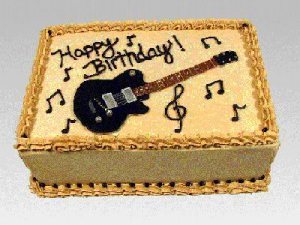
image from handmademusicclubhouse.com
These other families and their children became our extended family which included children who were students at public and Waldorf schools as well as homeschoolers; Merlyn was all three at one point or another.
Many of these adults and children were/are musicians, as Merlyn is. Our diverse community also included storytellers, teachers, woodworkers, roofers, artists, singers, dancers, therapists, the aforementioned midwives, political activists and social change leaders, construction/building tradespeople, office workers, gardeners, writers, herbalists, acupuncturists, massage therapists, composers, actors, directors, nonprofit social service workers, playwrights, spiritual teachers and leaders, computer techies, farmers/maple syrup makers, publishers, business owners, bookkeepers, retail workers, restaurant workers and many more.
Our ethnic and religious origins included Jewish, Sufi, Buddhist, Hindu, agnostic, Native American, atheist, British Isles/Western European, Chinese, African, Eastern European, and many more. We were/are lesbian, gay, bisexual, queer, transgender, questioning, and unknown or unprovided.
Some of the places we lived right before and after Merlyn was born had no electricity or running water (or even walls). We played board and card games, invented and actual sports games. Most of us intentionally had no televisions or war toys. We put the non-TV-watching time to great use.
We READ a lot! We put on plays, played music, talked a lot with each other, rode bikes, ice skated, sledded, swam, cooked and did “kitchen opera,” made costumes, hiked, walked, repaired, recycled and re-used (long before it was required), spent time in Finnish/Dutch-type saunas and Native American sweat lodges, canned and preserved food and herbs, sang and drummed and worked in ever-changing configurations of children and adults together.
Merlyn, you have become an amazing adult: kind, compassionate, intelligent, capable, worthy of and earning respect and admiration from colleagues, employers, bandmates, friends and peers. I am very proud to be your mother!
I hope, on this anniversary of the day of your birth, in your first year since 1999 of living back in the town you spent most of your growing-up years, that you and your sweetie, Lauren, celebrate in multiple ways with friends and your dad. I wish for you to enjoy a great birthday and many more, healthy, happy and prosperous ones to come!
I love you! Thanks for making me a mother!
I, Merlyn and Christopher, 2013
Filed under: Gratitude, Personal stories Tagged: Birthday, community, Merlyn Ember







April 30, 2014
Mosquito Week, casting “Star Wars: Episode VII,” a dolphin’s first word, and the linguistic use of “totally”
I wish I had extra awake hours just to catch up on TED talks!
 Originally posted on TED Blog:
Originally posted on TED Blog:

Bill Gates once released mosquitos into the TED theater to make a point about malaria research. Now, he’s started Mosquito Week. Photo: James Duncan Davidson
Below, some intriguing news highlights from the TED community over the past month:
You’ve heard of Shark Week, but what about Mosquito Week? Bill Gates declares it a thing on his blog. (Watch the legendary talk in which Bill released mosquitos into the TED audience.)
David Binder cleaned up in the Tony nominations today. His revival of Hedwig and the Angry Inch, starring Neil Patrick Harris, got eight nominations, while his Of Mice and Men got two. (Watch David’s TED Talk, “The arts festival revolution”)
In other entertainment news, JJ Abrams announced the cast of Star Wars: Episode VII, and fans flip because Mark Hamill, Carrie Fisher, Harrison Ford and Peter Mayhew (aka Chewbacca) are all returning. (Watch…
View original 348 more words
Filed under: Writing







10 Things Creative People Know
Support the #arts in #education and at #home!
 Originally posted on Inspired Journeys:
Originally posted on Inspired Journeys:
A recent UCLA study found that when young people engage in the arts at an early age, they outperform their peers in every category, from academics to life skills. Cross-cultural anthropologist Angeles Arrien tells us that in many traditional cultures, when an ill person goes to the healer, he or she is asked four questions: When did you stop singing? When did you stop dancing? When did you stop telling your story? When did you stop sitting in silence? She calls these the healing salves. Numerous studies show that activities like drawing and creative writing—even knitting—raise serotonin levels and decrease anxiety.
This quote is taken directly from Peggy Taylor and Charlie Murphy’s article on the things that creative people know.
View original 56 more words
Filed under: Writing







April 29, 2014
When Your Father Dies
For all those who have lost their fathers recently or who still feel the loss.
 Originally posted on Red's Wrap:
Originally posted on Red's Wrap:
When your father dies, you will be at a loss for words.
If it’s a surprise, you will burst into tears. You will cover your face with your hands and cry like you were six-years old, like the time you got lost on the way home from school and all the houses looked different and you couldn’t find your way. That’s how you’ll cry.
If you knew it was coming, that your dad was going to die because he was so ill, you will lay your head down on your folded arms and weep. You will be tired and part of you will be grateful because nothing is worse than seeing the man who laughed and lifted you up and twirled you around confined to a hospital bed, silent and hurting.
You will wonder who you are now that your father is dead. If your mother is also dead, it…
View original 465 more words
Filed under: Writing







The Story Behind Leo
OK: friends and family, weigh in on THIS Leo! Leave comments, please!
 Originally posted on Jessica Davidson:
Originally posted on Jessica Davidson:

Each sign of the zodiac represents an archetype. These are elemental structures in the psyche which give shape to our lives and inspire meaning through myth. Astrology is a multidimensional, multivalent system of storytelling. The myths behind your horoscope form a complex web of meaning which underpins the narrative of your life. The gods are alive and living through you…
Leo Myths
Leo is all about creativity and self-creation. They are intuitive, childlike, idealistic, and fiercely loyal. Leo is almost more of a noble Knight than Aries, but instead of all the fighting, it’s more about the poncing about and showing off, as they do tend to think the world revolves around them. Leos are truly original and charismatic, although often not as confident as they seem.
View original 278 more words
Filed under: Writing







8 Great Literary, Book Nerd, and Storytelling Podcasts
Worth exploring!
 Originally posted on Andrea Reads America:
Originally posted on Andrea Reads America:
I am a huge fan of the podcast medium. I listen
while I clean
,
while I walk
, while I cook, while I dress after my shower. I do not subscribe to print periodicals that run book reviews, I am not a librarian, and
I no longer work in a book store
, but I
am
a reader who is interested in what’s going on in the book world, in reading culture, and who loves a well-told story. With limited time to consume print media, but with ample time to listen, I have become an avid fan of
podcasts
, and my hungry mind devours the bookish and storytelling podcasts below. These shows provide the literary fix I need as a word nerd. I plan special walks or add extra chores to my list when any of these drop new episodes. I hope you enjoy them, too.
View original 1,022 more words
Filed under: Writing









